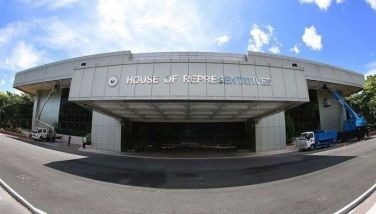Banks’ bad loans rise again
March 20, 2003 | 12:00am
Bad loans are on the rise again in the banking industry, despite an increase in total bank loans that should have reduced the proportion of non-performing loans to the total loan portfolio of the country’s commercial banks (KBs).
Preliminary estimates by the Bangko Sentral ng Pilipinas (BSP) showed that the NPL ratio of commercial banks climbed from 14.95 percent in December to 15.05 percent in January.
This developed as the BSP reported that bank lending continued to improve in January 2003, with the total volume of outstanding KB loans rising by 4.4 percent year-on-year to reach P1.4 trillion compared to the 2.4- percent growth in the previous month.
Commercial bank lending has been growing steadily for the fifth straight month since September 2002, but BSP sources said the ratio of bad loans to total loans also increased.
"The NPL ratio traditionally drops in December due to banks’ window dressing efforts," the source explained. "This slight increase just reflects a cyclic ‘normalization’ that happens at the start of every year."
However, the source pointed out that bank examiners were still refining the NPL figure and there would be "slight revisions" once the Monetary Board approves the adjustments.
The adjustments, according to the source, would tighten the NPL ratio by "a few percentage points." The source added that banks have more or less exhausted the benefits of the BSP’s "virtual write-off" rule that allowed banks to remove some bad loans from their portfolio as long as they were fully-provisioned.
The NPL ratio is a key indicator of the health of the banking sector. The higher the percentage, the deeper they are in trouble. Aside from actually trying to pare down their bad loans, banks also had the option of increasing the total loan portfolio but banks have not been too eager to do this.
The BSP reported that in January, bank lending activity continued to improve, led primarily by the growth in the following sectors: agriculture, fisheries and forestry (27.7 percent); community, social and personal services (14.5 percent); and manufacturing (7.7 percent) which combined comprise 45.3 percent of total outstanding loans of commercial banks.
BSP Acting Governor Amando Tetangco said the upturn in bank lending to the manufacturing sector in January also marked the second consecutive month of increase after 17 months of year-on-year contractions.
"The implementation of the Special Purpose Vehicle Act of 2002 on Jan. 10, 2002 is expected to further invigorate bank lending activity as it would facilitate speedier disposal of the banking system’s non-performing assets," Tetangco said.
He added that traditional growth in consumer demand during the holiday season in the fourth quarter is also expected to further propel growth in bank lending.
Preliminary estimates by the Bangko Sentral ng Pilipinas (BSP) showed that the NPL ratio of commercial banks climbed from 14.95 percent in December to 15.05 percent in January.
This developed as the BSP reported that bank lending continued to improve in January 2003, with the total volume of outstanding KB loans rising by 4.4 percent year-on-year to reach P1.4 trillion compared to the 2.4- percent growth in the previous month.
Commercial bank lending has been growing steadily for the fifth straight month since September 2002, but BSP sources said the ratio of bad loans to total loans also increased.
"The NPL ratio traditionally drops in December due to banks’ window dressing efforts," the source explained. "This slight increase just reflects a cyclic ‘normalization’ that happens at the start of every year."
However, the source pointed out that bank examiners were still refining the NPL figure and there would be "slight revisions" once the Monetary Board approves the adjustments.
The adjustments, according to the source, would tighten the NPL ratio by "a few percentage points." The source added that banks have more or less exhausted the benefits of the BSP’s "virtual write-off" rule that allowed banks to remove some bad loans from their portfolio as long as they were fully-provisioned.
The NPL ratio is a key indicator of the health of the banking sector. The higher the percentage, the deeper they are in trouble. Aside from actually trying to pare down their bad loans, banks also had the option of increasing the total loan portfolio but banks have not been too eager to do this.
The BSP reported that in January, bank lending activity continued to improve, led primarily by the growth in the following sectors: agriculture, fisheries and forestry (27.7 percent); community, social and personal services (14.5 percent); and manufacturing (7.7 percent) which combined comprise 45.3 percent of total outstanding loans of commercial banks.
BSP Acting Governor Amando Tetangco said the upturn in bank lending to the manufacturing sector in January also marked the second consecutive month of increase after 17 months of year-on-year contractions.
"The implementation of the Special Purpose Vehicle Act of 2002 on Jan. 10, 2002 is expected to further invigorate bank lending activity as it would facilitate speedier disposal of the banking system’s non-performing assets," Tetangco said.
He added that traditional growth in consumer demand during the holiday season in the fourth quarter is also expected to further propel growth in bank lending.
BrandSpace Articles
<
>
- Latest
- Trending
Trending
Latest
Trending
Latest
Recommended
































